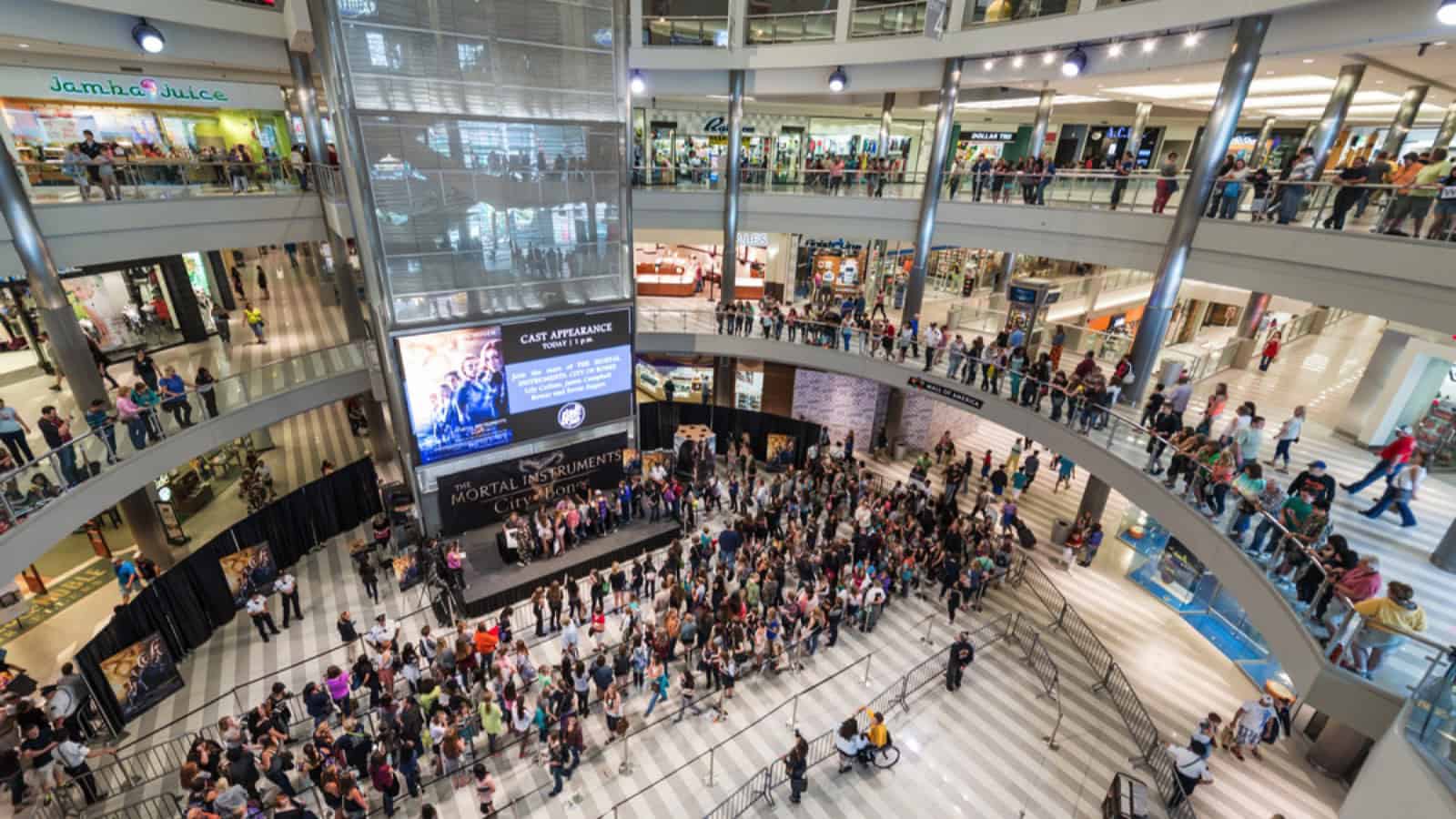Consumerism is a big part of American culture, and for many, the idea of buying more and having more means they will have a more enjoyable life. We’ve highlighted 20 ways in which consumers across the US consistently buy into this ideal and how it is impacting people’s finances and the environment.
Oversized Homes

According to Investopedia, the average size of an American house in 2021 was 2,532 square feet; this compares to an average of 983 square feet in 1950 and 1,500 square feet in 1970. This huge growth shows that Americans want more space, despite a decrease in the average size of families.
Fast Fashion

Trends in the fashion industry move quickly, and this has created a love of cheap clothes that people buy in excess before throwing away within the space of a year. This means there is a huge cycle of waste, and an estimated 11 million tons of clothing are thrown away every year in the US.
Throw-away Electronics

Smartphones, tablets, and other electronic devices are often designed to have a short lifespan, meaning consumers feel the need to update them regularly and dispose of their old devices. U.S. PIRG found, “In the United States alone, we generate about 6.9 million tons of e-waste each year.”
Car Culture

Like many things in America, when it comes to cars, there’s a culture of the bigger the better. These large cars and trucks are inefficient on fuel and significantly contribute to carbon emissions across the country. Luxury and high-performance cars are also seen as symbols of success and status.
Single-Use Plastics

Packaging and disposable products are big business in America, and we throw away millions of tons of plastic waste each year. Many of these plastics can’t be recycled, meaning a lot of this waste goes to landfills. In recent years, there has been a big movement to reduce the production of these items where possible.
Self-Storage

Self-storage is a huge industry, and Global Newswire reported that it “was valued at USD 61.2 Billion in 2022 and is expected to reach USD 101.8 Billion by 2032.” This shows how American people have a huge amount of belongings that they rarely need to access.
Food Waste

It’s estimated that the average American household wastes around 40% of the food that they buy each year, which is a huge cost to consumers and the environment. The culture of large portions in restaurants and fast food chains has normalized the idea of over-consuming food, which makes this problem worse.
Mega Malls

Mega malls across the United States became places to socialize, be entertained, and eat, as well as shop. Often, these environments lead to impulse spending. The malls can sometimes help local economies, but they tend to be filled with large chain stores that take business away from independent shops.
Water Consumption

On average, families in America use more than 300 gallons of water per day, which is significantly higher than in most other developed countries. The agriculture and manufacturing industries also have high water consumption rates, which are further driven by the high level of consumerism throughout the country.
Holiday Spending

The holidays in America are now an extremely commercialized event, and they come with huge pressure to spend money on gifts, experiences, food, and decorations. USA Facts says that “Americans spent an estimated $531.8 billion in the retail sector in December 2022.”
Luxury Goods

Luxury goods have become a symbol of status and social ranking, which has led to a huge increase in the market. Consumers spend a significant amount on high-end fashion, accessories, homewares, and more. Often, this is to boost their level of self-esteem or acceptance by others.
Media Overload

With social media, websites, and traditional advertising spaces all showing us the latest products and services, we are all overwhelmed with marketing messages on a daily basis. This can cause consumers to make more and more impulse purchases, making a big impact on their financial planning as well as the environment.
Disposable Culture

Disposable items such as plastic utensils, paper plates, and grocery shopping bags are contributing to a massive amount of waste and are just part of the reason that the US is one of the biggest producers of waste globally. As a result, there is a movement towards reusable products and thinking more carefully about what we need.
Big Debts

In 2023, consumer debt in the US will reach a record high of $17.5 million. This number is across different types of loans, including mortgages, car loans, credit cards, and student loans. There is a culture of buy now, pay later, which can lead to overspending and significant financial difficulties down the line.
Children’s Products

It’s not just adults who are leading the culture of consumerism in America; children’s toys, clothing, and gadgets make up a huge market across the country. There is a lot of advertising aimed at children, and parents face pressure from friends and family to ensure they provide the best childhood for their kids by spending huge amounts of money.
Overpackaged Goods

Although there has been a big push to reduce packaging, many products are still being sold with excessive amounts of plastic and paper packaging. This is a particular issue in the food and electronics sectors, but we may see change in the near future as consumers demand more eco-friendly solutions.
Fitness and Health Products

Supplements, equipment, and clothing are just some of the products that make up the multi-billion dollar health and fitness industry. Social media has created more consumer demand as advertisements and influencers sell consumers products that are supposed to have life-changing effects.
Pet Products

The pet industry has seen significant growth over the last few decades, and pet owners spend a lot of money on products such as gourmet food, accessories, and grooming. This has been driven by owners who have started to think of their pets as humans and want them to have the luxuries that they purchase for themselves.
The Influence of Social Media

Social media has become a space for targeted marketing messages through the use of ads and influencers. Companies are able to show their consumers an idealized version of life with the message, ‘You could be like this if you buy our product’. This has increased impulse purchases.
Leisure and Entertainment

Many American’s value experiences and entertainment and therefore spend a significant portion of their disposable income on leisure. This includes days out, travel and vacations, hobbies and interests, and digital entertainment subscriptions. The internet has enabled people to access more options than ever before, increasing impulse spending in this area.
